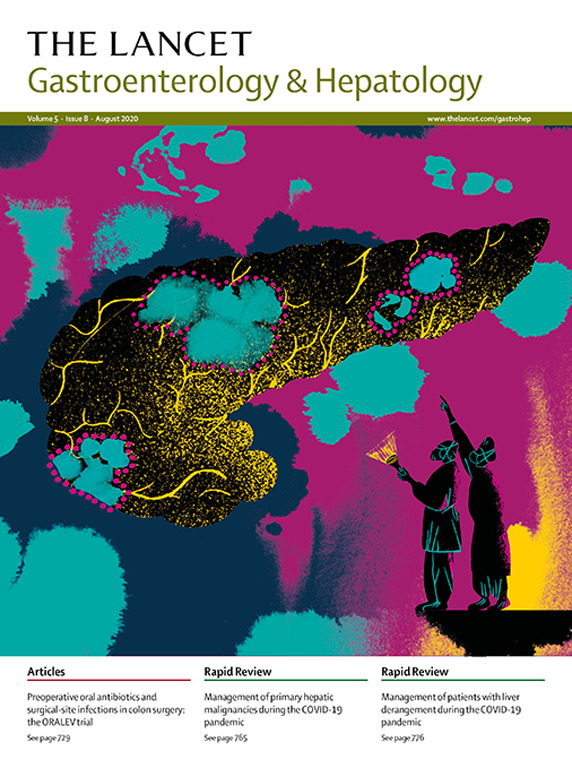为扩大乙型肝炎治疗指南提供科学和医学证据
IF 38.6
1区 医学
Q1 GASTROENTEROLOGY & HEPATOLOGY
引用次数: 0
摘要
慢性乙型肝炎的治疗依赖于核苷或核苷酸类似物药物,这些药物抑制乙型肝炎病毒(HBV)复制,使肝酶正常化,减缓疾病进展,具有良好的安全性。治疗不能治愈,患者仍有肝硬化和肝细胞癌的危险。治疗指南一般将抗病毒治疗限制在HBV DNA高、ALT升高或肝纤维化的个体,通常需要纵向检测,而这种检测在资源有限的环境中几乎无法获得。因此,只有不到3%的HBV感染者正在接受抗病毒治疗。中国和世卫组织的指南最近扩大了获得抗病毒治疗的标准,但仍有一些不在这些指南范围内的人可能从开始治疗中受益。HBV感染引起的病理过程在这些患者中仍然活跃。我们提出了扩大治疗资格的好处和风险。我们认为减少肝损伤和致癌刺激的好处远远大于风险。本文章由计算机程序翻译,如有差异,请以英文原文为准。
Scientific and medical evidence informing expansion of hepatitis B treatment guidelines
Chronic hepatitis B treatment relies on nucleoside or nucleotide analogue drugs that suppress hepatitis B virus (HBV) replication, normalise liver enzymes, and slow disease progression with excellent safety profiles. Treatment is not curative, and patients remain at risk of cirrhosis and hepatocellular carcinoma. Treatment guidelines have generally restricted antiviral therapy to individuals with high HBV DNA and elevated ALT or hepatic fibrosis, often requiring longitudinal testing that can be scarcely available in resource-limited settings. Consequently, fewer than 3% of people living with HBV infection are receiving antiviral therapy. Guidelines from China and WHO recently broadened access criteria to antiviral therapy, but there are people who fall outside these guidelines who could still benefit from treatment initiation. The pathological processes induced by HBV infection are still active in these patients. We present the benefits and risks of expanding treatment eligibility. We believe that the benefits of reduced hepatic damage and carcinogenic stimuli greatly outweigh the risks.
求助全文
通过发布文献求助,成功后即可免费获取论文全文。
去求助
来源期刊

Lancet Gastroenterology & Hepatology
Medicine-Hepatology
CiteScore
50.30
自引率
1.10%
发文量
0
期刊介绍:
The Lancet Gastroenterology & Hepatology is an authoritative forum for key opinion leaders across medicine, government, and health systems to influence clinical practice, explore global policy, and inform constructive, positive change worldwide.
The Lancet Gastroenterology & Hepatology publishes papers that reflect the rich variety of ongoing clinical research in these fields, especially in the areas of inflammatory bowel diseases, NAFLD and NASH, functional gastrointestinal disorders, digestive cancers, and viral hepatitis.
 求助内容:
求助内容: 应助结果提醒方式:
应助结果提醒方式:


